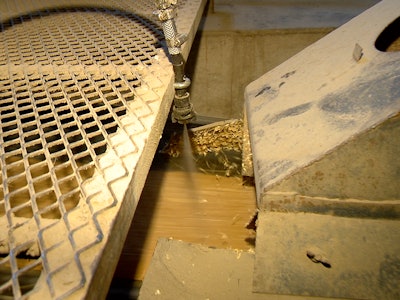
Once a commodity has been loaded into storage, it’s susceptible to decimating insect damage, and the longer unprotected grain is stored, the more likely insect damage can occur. Treating with a stored grain protectant as a commodity is loaded into storage provides a vital layer of protection and insurance against costly insect infestations.
An integrated pest management (IPM) strategy is recommended for optimal insect protection, which includes cleaning then pre-treating your empty bins first and then treating your grain as it goes into storage.
Central Life Sciences and the Bug Free Grains team have a wide range of stored grain protectant products that can complement your storage strategy.
Why Use Stored Grain Protectants?
Grain that’s treated when being loaded into storage has the best chance of maintaining value, as stored grain insect problems are curbed at the outset. According to the USDA, stored grain insects destroy up to 10% of the U.S. grain crop every year. It’s an easy choice to protect your bottom line by using a stored grain protectant.
Grain protectants can also help you proactively prevent an insect problem before it occurs. The Bug Free Grains Product line includes products that combine the knockdown power of an insecticide and the long-term control of an insect growth regulator (IGR) to help control insect infestations and prevent rebound.
Prime Tools for On-Grain Treatment
Let’s take a look at some of the Bug Free Grains products that work particularly well for on-grain treatments:
- Diacon® IGR can be used virtually everywhere stored product insects are a problem. Diacon® IGR interrupts the life cycle, providing long-term insect control.
- Diacon®-D IGR is an insect growth regulator, a ready-to-use, dry formulation option for controlling insects at on-farm and off-premise storage sites where water is scarce.
- Diacon® IGR PLUS contains an adulticide and insect growth regulator for quality grain protection to help get rid of weevils and other pests.
- Central Life Sciences has also recently introduced Gravista™ Insecticide to the market. Featuring 3-in-1 insect control with an adulticide, an insect growth regulator (IGR) and a synergist, Gravista™ Insecticide kills labeled insects and breaks their life cycles without the need to tank mix.
- Centynal™ Synergized Insecticide brings a boost to short-term grain storage and rescue treatments by combining both an adulticide and a synergist.
When loading grain into storage, it’s imperative to have a plan in place, and the best stored grain protection plans involve grain protectant products.
Tips for On-Grain Application
This list of tips can help you maximize product coverage during on-grain treatments:
- Keep Thorough Records: A grain storage application record will help you prevent under- or over-treating your stored commodities. Information to include in your written or digital record for future reference includes: date, amount of grain treated and amount of product used.
- Pay Close Attention to Ensure Proper Application of Product: During product application, droplets should be at least 157-360 microns, producing coarse or very coarse droplets. Make sure to select the proper nozzle type to control spray droplet size. A flat-fan or cone nozzle with a coarse spray will yield optimal size droplets, further ensuring drift elimination.
- Use a Low Spray Pressure on Stored Grains: Keep spray pressure at 20-25 psi. Using a higher pressure will create finer droplets that are far more likely to drift, limiting the product’s effectiveness in controlling stored grain pests.
- Position Application Efficiently: Aim as close as possible to the point where the grain drops into the grain storage bins, and spray in a manner that hits the grain and not the adjoining equipment. Test the direction and formation of your spray pattern as you begin, and adjust as necessary to avoid poor coverage or wasted product. Adding more nozzles to improve coverage is also encouraged. If the spray stops or changes pattern unexpectedly, be sure to turn your sprayer off before checking the nozzles for clogs.
Keep in mind that on-grain treatments are part of a larger plan to keep stored grain protected, and the Bug Free Grains lineup has solutions for every step of the process.
From rescue treatments and empty-bin applications to on-grain treatments, Central Life Sciences has you covered.
To learn more, visit bugfreegrains.com.
Diacon, Gravista, and Centynal are trademarks of Wellmark International.

